A global perspective
A very positive feature of Marco Bojcun’s new book, ‘Towards a Political Economy of Ukraine’, is that it attempts to situate the development of capitalism in Ukraine in the global perspective. The author cites some authors from the tradition of world-system analysis, such as Chase-Dunn, and repeatedly underlines Ukraine’s particular function in the global economy – to export raw materials produced with cheap labor power. He has a sober view of Ukraine’s position in the global hierarchy of nations, reasonably positioning 1990s Ukraine towards the bottom of the semi-periphery, and moving downwards. Such a perspective on Ukraine’s situation is much-needed, considering how political discourse in the country is so bogged down in hyper-emotional discussions of the superiority of ‘the West’ over ‘Eastern barbarism’.
I believe it would be much more productive to focus on the fact that the world is in fact structured by the division between high-wage nations, which comprise around 16% of the world’s population – and which are not simply equal to ‘the West’, but also ‘Eastern’ nations such as South Korea and Japan – and the low-wage nations, which comprise the vast majority of the world’s peoples. It is around these faultlines that there is room for solidarity around shared problems, and material interest in cooperation to solve them.
Such a global perspective is also relevant insofar as many leftists still cling to an exceptionalist view of Ukraine, preferring to pretend that the experience of the high-wage nations is most relevant here – reminiscent of the communists and social-democrats Bojcun cites protesting that ‘the International Monetary Fund’s prescriptions for the state budget were appropriate for a Third World country, but not for Ukraine[1]’. I hope that the global perspective that this book begins to offer encourages more acceptance of the fact that Ukraine, as a nation whose per capita income is between that of India and the Philippines, has far more to learn from the political experiences of such nations than from Germany or the USA.
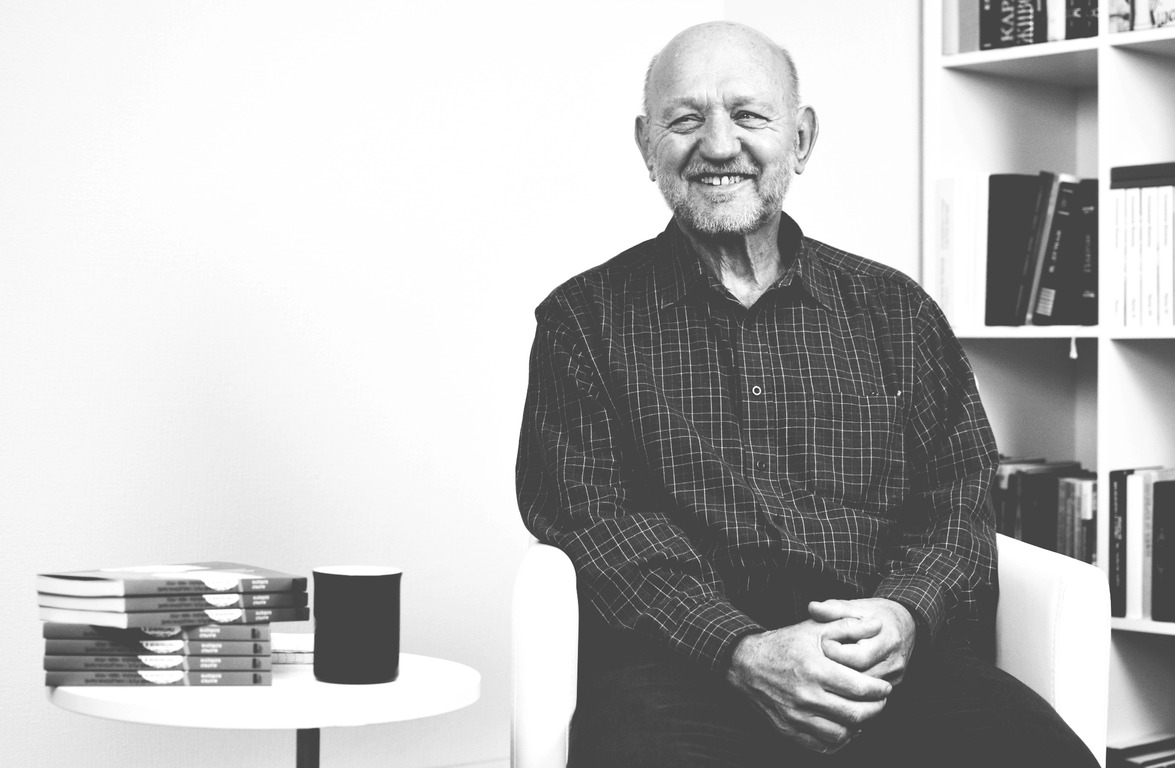
Marko Bojcun / Photo: VECTOR.media
Why are most nations poor?
Complacently waiting for an influx of capital that in the end never came has often prevented the underdeveloped countries from rationalizing their economies by mobilizing their own resources.
Arghiri Emmanuel, Unequal Exchange, page 157
The main problem of this book is that it fails to explain the problem it purports to treat – that of the existing and future tendencies of capitalist economic development in Ukraine. He quite rightly states that ‘capital, whether foreign or domestic, has revealed itself as fundamentally anational in outlook and obligation[2]’, but he does not explain why the world capitalist system acts against the national interests of low-wage nations. His emphasis on the role of the state, combined with a lack of real explanation for why capitalist economic logic blocks development in low-wage nations, implies a very high degree of possible maneuver by poor capitalist nations in the world system.
For instance, Bojcun notes that while capital flowed into Ukraine in the early 2000s, very little of it was productively invested, instead finding its way into real estate, financial games, or back in a bank account in Cyprus[3]. But why did that happen? Bojcun does not answer this question. It seems to me like a quite obvious explanation can be found – Ukraine, being a low-wage nation whose role in the global economy is to sell cheap products produced by its low-wage workers, has a narrow internal market with few productive investment opportunities. The high-wage nations have already relocated their production to a select few low-wage nations (mainly in South-East Asia), thereby satisfying their effective demand for goods produced with cheap labor and necessitating no further expansion of productive investment beyond these select few exporter nations. This is a situation common to most low-wage nations, and Ukraine is no exception.
Sometimes the analysis slips to the level of tautology, such as when he explains the economic collapse of the 1990s by ‘investment famine[4]’. It is strange that he describes as a ‘paradox’ the fact that Ukrainian exports grew in the 1990s[5], despite collapsing domestic investment and demand. This is quite explicable as the transition from a planned economy – in which investments are not made purely to satisfy existing effective demand, and which hence can continually invest despite initially low effective demand – and capitalism, which only invests for realization by existing purchasing power[6]. It is hence natural that a low-wage capitalist nation ‘endowed’ with a large industrial complex (by planning) would only be able to use it if its product can be exported to foreign markets. For instance, this process has been particularly visible for the Soviet textile complex, where plants only survived if they were able to get access to foreign markets in the high-wage nations.

Cover of Marko Boitsun's book "Towards a Political Economy of Ukraine".
A ‘bad elite’?
Bojcun’s explanation of Ukraine’s poverty centres on a popular topic – the supposedly limiting role played by the ruling class. The favorite pastime, both of serious ‘political commentators’ and ordinary people, is to blame Ukraine’s economic problems on its ‘bad elite’. This is also given a supposedly ‘non-populist’, technocratic spin by the IMF’s beloved ‘struggle against corruption’, in which the personal weaknesses of ‘rent-seeking’ bureaucrats have thereby apparently doomed the vast majority of the world to endless poverty. According to this argument, development for the low-wage nations is assured through integration in the global capitalist system, and the only limitation is subjective insufficiencies or an overly-active state (named ‘corrupt’). Faced with the fact that integration into the global capitalist system manifestly does not bring instant development, this vision is forced to implicitly conclude that low-wage ‘races’ are too stupid to develop, and should remedy this by further free trade integration and removal of any remaining state bureaucracy or protectionism.
Sometimes it seems like Bojcun also takes quite a bit too seriously the role and power of the Ukrainian ruling class.
For instance, at one point he claims that the difficulty of finding export markets for Ukrainian commodities in the 1990s was due to the lack of ‘experience’ in dealing with the world market[7]. Might it not be more rational to conclude that Ukraine’s large heavy industrial complex could only exist under a planned economy? A planned economy beginning with low initial wages levels naturally favors higher investment in heavy industry than a capitalist economy with low wage levels, given that the former is able to invest for long-term aims[8], while the latter only invests for existing purchasing power. A closed planned economy can invest in heavy industry now to provide the basis for producing consumer goods in the future, but a closed low-wage nation has little to no incentive to invest in anything. High-wage nations also tend to specialize in capital-intensive sectors, and low-wage nations in labor-intensive sectors, since high wages encourage application of labor-saving technology and labor-intensive production is most cost-competitive by using low wages. There are several rational explanations of Ukraine’s deindustrialization, based on the fundamental difference in economic logic between capitalism and a planned economy, and which do not rely on subjective factors. Bojcun points towards such an analysis when he notes that of all industrial sectors, light industry, particularly food processing, was the least hit by the industrial collapse of the 1990s since it found buyers on the world-market[9]. But he remains at the level of description, not analysis.

Severodonetsk Association "Azot"
Bojcun’s analysis also suffers from over-emphasizing the role of the state in capitalist economic development. But it is not the state which dictates the direction of investments in a capitalist economy, but capitalist firms, which are motivated by money profit. It is telling that when treating the effects of the 2008 crisis in Ukraine, Bojcun asks ‘What did the crisis reveal about the adequacy of the national development strategies pursued during the past decade by the Ukrainian state?[10]’ It is interesting that this ‘statist’ explanation of the poverty of some nations also extends to his analysis of the past. In his analysis of tsarist Ukraine, he also seems to explain underdevelopment by reference to the state – ‘The absence in this period of a Ukrainian state, and indeed the relative weakness of the Russian state among the Great Powers, marked this phase of capitalism with the features of dependency[11]’.
This formula by which underdevelopment is explained by reference to the state also has distinct political consequences. Bojcun’s explanation of social unrest in Ukraine as being a result of the ‘broken promise’ to attain prosperity from ‘leaving the Soviet Union and joining the West’ could imply that this strategy was in itself a viable route to prosperity, but simply failed due to betrayal by elites[12]. The solution hence seems to be the same form of economic development, but with ‘better leadership’.
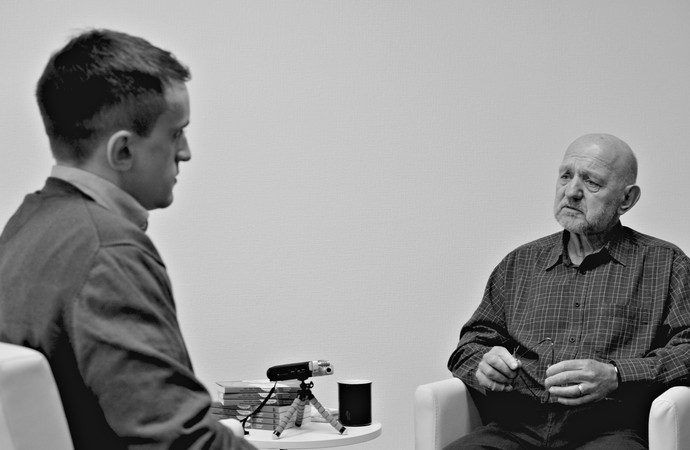
Marko Bojcun / Photo: VECTOR.media
The contradictions of import-substitution and comprador industrialization
Historically, and today, it is clear that there are essentially two paths of capitalist development for low-wage nations – full comprador development, in which all forces are dedicated to attracting foreign investment, which overrides any possibility of protectionism or state intervention, and a more nationally oriented attempt at import-substitution industrialization, which protects strategic sectors, but with the same aim of increasing exports to the markets of the high-wage nations. In reality, of course, these two forms of development are generally combined (although contemporary Ukraine could be singled out as a case of relatively ‘pure’ comprador development), but the two strategies do nevertheless often conflict with each other (many forms of protectionism are forbidden by free trade agreements and WTO membership, for instance).
It is an important task to address the contradictions of both paths, particularly that of import-substitution industrialization, or protectionist capitalism, which is growing in popularity throughout the world in step with the current crisis of laissez-faire capitalism. With regard to the early 2000s, in which the ruling class alternately pushed one or the other strategy, Bojcun is right to say that ‘These eight years of export-led growth did not fundamentally improve the structure of Ukrainian industry, or its overall technological level or the nature of its insertion into the world economy[13]’. It is very important to note that both ISI and comprador development in low-wage nations – given that they both depend on private capital – necessarily depend on export markets for domestic production[14]. This is because capitalist development in a closed low-wage nation proceeds extremely slowly due to the small internal market. Nevertheless, given that the majority of the world’s nations (the poor nations) are competing to export to a select few consumer markets, most low-wage nations are left behind, with few investments left for them. It is hence easy to explain the fact that the attempt to attract foreign capital generally fails, whether it is done through comprador or more ISI means.
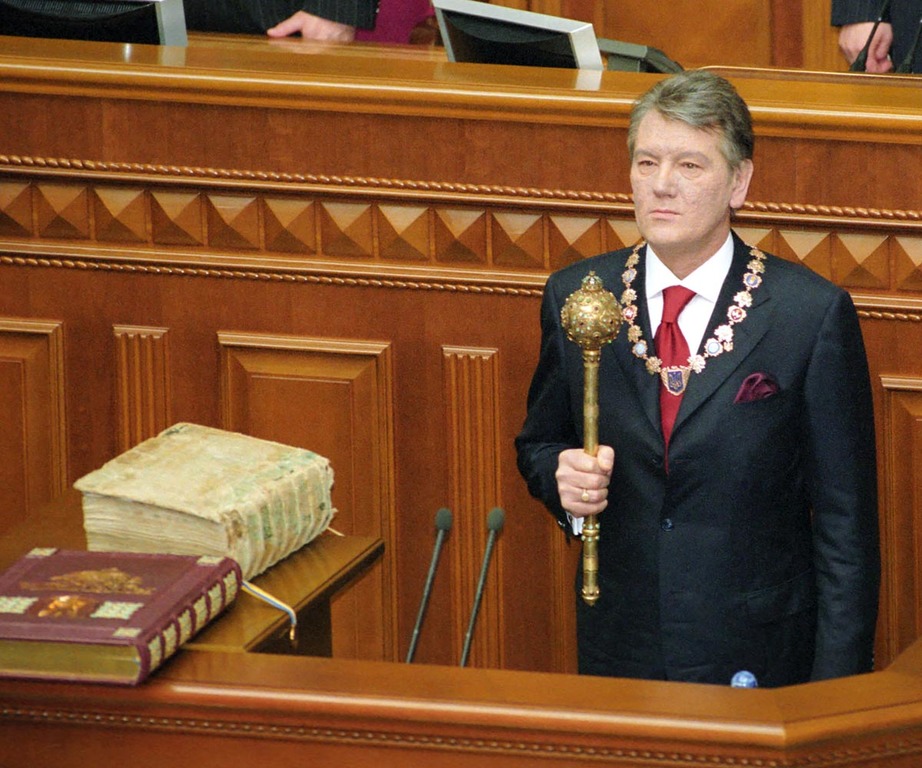
Viktor Yushchenko is sworn in as the third President of Ukraine
With regard to Yuschenko’s more comprador reign, Bojcun’s analysis accurately notes how the narrowness of the Ukrainian market led foreign and domestic capital to repatriate its earnings, or spend it in unproductive sectors such as retail, finance or real estate, creating an ‘external brake on development[15]’.
However, Bojcun’s critique of the ISI model of development exemplified by Kuchma’s reign misses the point. He notes that few productive investments were made in the export boom of the early 2000s, instead escaping to offshore havens[16]. He concludes that ‘Kuchma’s strategy failed because the state leadership could not compel its own capitalists to keep their wealth in the country to upgrade and diversify the domestic economy[17]’. This is problematic since it implies that it is possible to simply ‘compel’ capitalists to keep their wealth inside the nation. But capital only comes to the low-wage nations because of their low wages and low taxes – when either of these two increases, much capital tends to leave. This is the situation for all low-wage nations, whose competition renders the idea of nationally oriented capitalism a fantasy for the majority of them, and accounts for the inevitable collapse of ISI development if it is unable to find significant export markets. The limitations of capitalist economic development in low-wage nations are objective, not subjective – they are not caused by supposed limitations of the elite, and can be best solved by relying less on capitalist economic logic, according to which investments are made only if their product can be sold to those who can pay for it.
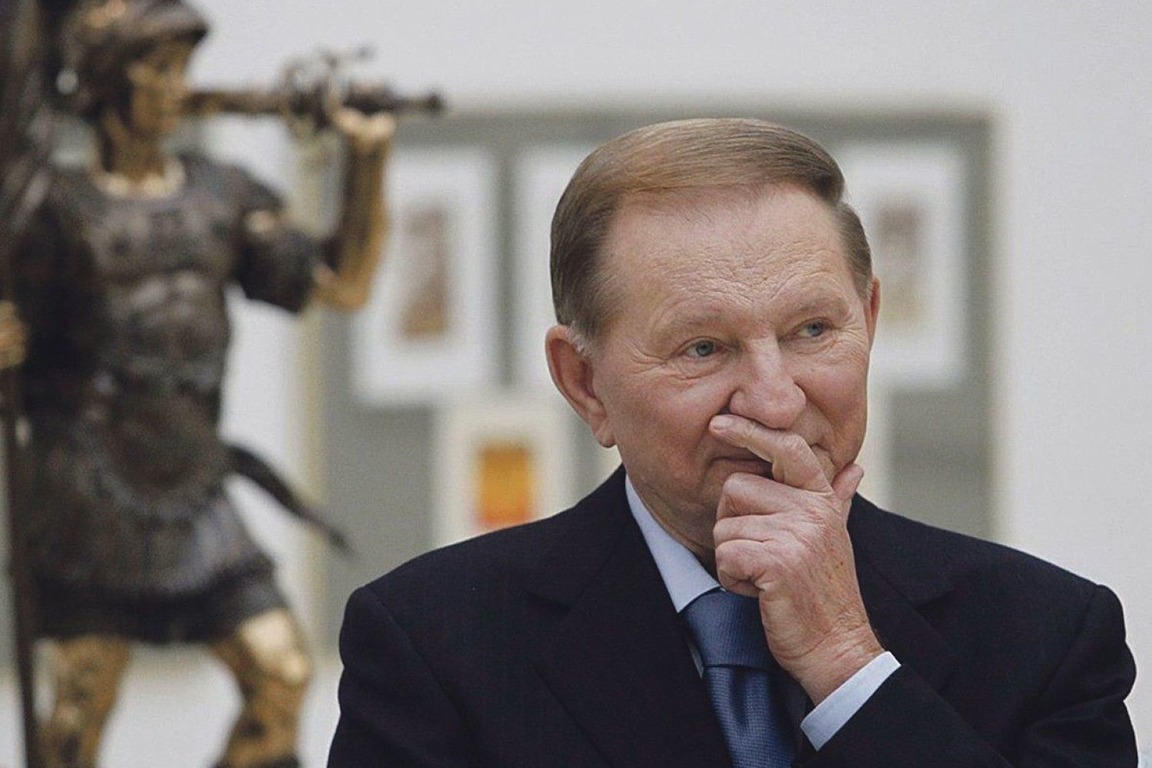
Second President of Ukraine Leonid Kuchma / Photo: focus.ua
The limits of EU integration
The division of the capitalist world between poor and rich nations is particularly stark for Ukraine, located as it is on the edge of the rich western European nations, and bordering a former low-wage nation – Poland – which has become relatively rich through trade integration with Europe. An explanation of these facts characterizing Europe, its semi-periphery and its periphery is sorely needed.
There are several times when the book correctly identifies low wages as the reason why capitalism has developed the way it has in Ukraine. At one point he notes that ‘The Central European states are more attractive than Ukraine because they are geographically more accessible and have greater domestic consumer purchasing power[18]’. He also notes how the former COMECON nations ‘were to be exploited as new consumer markets to absorb existing production, as additional, possibly alternative, sources of fossil fuels and raw materials and as debt markets. With one significant exception [oil nations like Kazakhstan] they have not been considered by Western investors as a terrain of significant productive investment[19]’. Given that European demand already had low-wage production zones in Poland, Asia, and using foreign migrant workers imported into the West European core, there was simply no need to productively invest in most of the COMECON nations.
Unfortunately, much of his analysis remains at the level of observation, rather than that of explanation. He rightfully points out the pitiful amount of productive aid received by the former COMECON nations, particularly when compared to the aid post-war Europe received with the Marshall plan[20]. But why has so little aid been given to the COMECON nations? Is it just a subjective limitation of current world leaders, who could and should be convinced to be ‘kinder’ to the poor nations? Is capitalist economic logic capable of allowing the development of the poor nations through a reform of global political leadership?
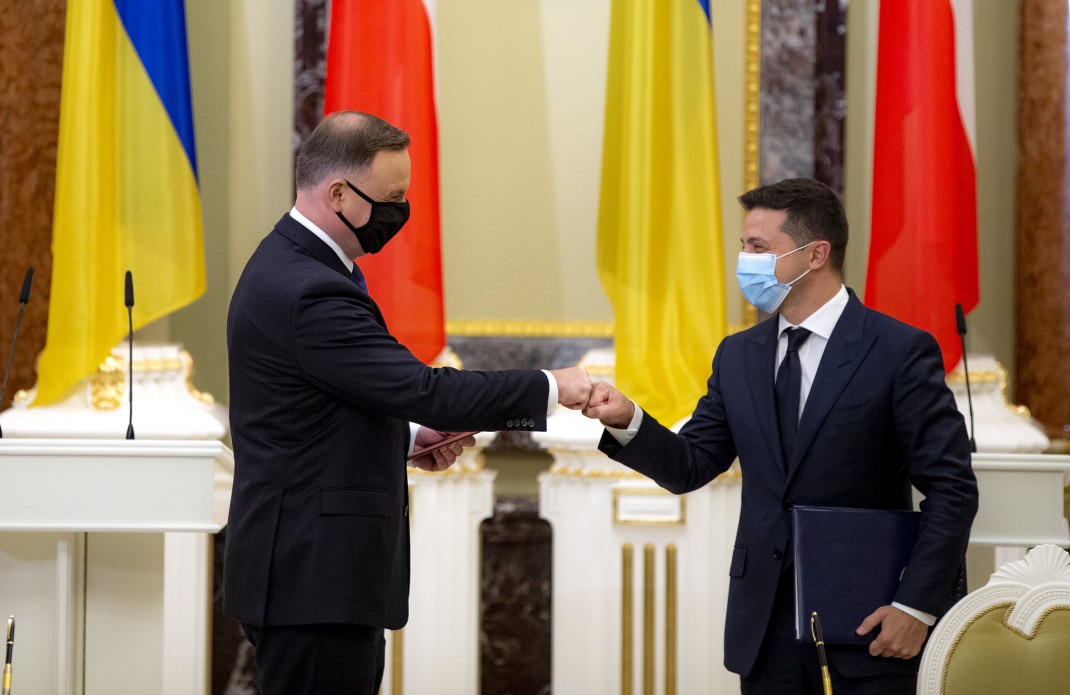
President of Poland Andrzej Duda and President of Ukraine Volodymyr Zelenskyi / Photo: Office of the President
Bojcun raises but does not explain the problem of why the EU never offered full market access to Ukrainian capital[21], a topic that has ironically remained topical after several years of ‘Euro-integration’. However, there do exist explanations – one favorite topic of the liberal-nationalist orientation is the idea of Ukraine’s ‘lost chance’ to ‘take the Polish path to prosperity’. In this vision of things, Ukraine could have integrated with western European capital just as Poland did in the 1990s, and subsequently reaped the same benefits, but was prevented from doing so by the political sabotage of the communists, supposedly allied with Kuchma, and the unfortunate survival of the ‘soviet mentality’ among citizens. On the other hand, there is another possible explanation – that export-oriented development for low-wage nations is objectively limited by the finite demand of the capitalist world-economy. Given that the EU already had a Poland to manufacture in, it didn’t need a Ukraine.
Furthermore, Poland has spent years receiving far more from the EU budget than it gives – in 2018, Poland received €16.350 billion from the EU budget (3.43% of its GDP) and contributed only €3.983 billion to the EU budget. When Poland was integrated into the EU, it had far lower wages than other EU members, and the granting of full access of Polish commodities to the EU market put strong downwards pressure on the wages and easy employment of the EU ‘labor aristocracy’. Why should the EU make the sacrifices for Ukraine, which is much poorer than Poland was, and whose war-torn situation requires far more investments for reconstruction?
Bojcun writes that the ‘lack of democracy’ and ‘authoritarian oligarchic capitalism’ in Ukraine was what prevented European integration[22]. Such an explanation is inadequate to say the least, when the nation which has gone furthest on the path of exporting for high-wage nation demand – China – is nothing if not oligarchic, corrupt, and authoritarian. Such an analysis of international trade and investment based on internal factors is misplaced, given that trade and investment is conducted with the aim of selling for a profit, rather than that of investing in the most democratic country. It also smells of the liberal explanation of ‘why Ukraine didn’t take Poland’s path’, with its idealist emphasis on political-subjective, rather than objective economic limits to capitalist economic growth.
Sometimes it is unclear what significance Bojcun considers the EU nations to have. He is quite diplomatic when it comes to the draconian protectionism imposed by the ‘liberal’ EU on low-wage nations like Ukraine[23]. Elsewhere, he argues that partnership with the EU nations offer the best prospects for Ukraine, insofar as the EU nations have large reserves of capital and advanced technology[24]. While that may be true, it is another question whether they are actually willing to transfer this technology to low-wage nations like Ukraine – empirically, as Bojcun himself states, their only interest in Ukraine has been as potential importers of EU goods, and they have made very few productive investments.
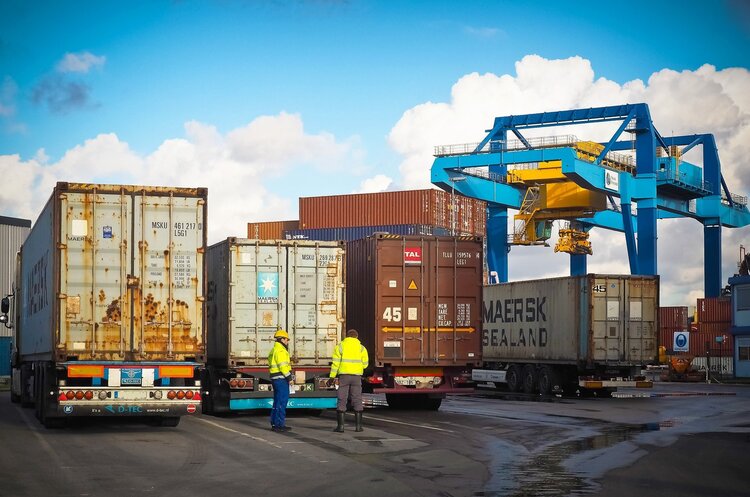
Photo: pixabay.com
Ukraine’s social contradictions from the global perspective
One important topic touched on by this book is that of the uneven development of capitalism within Ukraine itself. The fact of wage disparity between east and west Ukraine, and its role in the 2013-2014 events, is important to conceptualize, especially given the mythologization of these events by both supporters and critics. More analysis of regional inequality in the context of Ukraine’s integration into the world capitalist economy as a low-wage nation is an important task. The fact that he notes the limitation of the ISI form of development in the context of regional inequality and the subsequent social explosions it engendered[25] is also highly relevant today, when fantasies about a ‘return to Yanukovych-era stability’ or some even more vague ‘Euro-style social democracy’ are popular.
The results of Euromaidan
However, Bojcun seems close to such interpretations when he writes that Maidan arose due to ‘the failure of the contemporary ruling class to fulfil the popular expectations arising from the attainment of independence in 1991 for prosperity, social justice, democracy and national self-determination[26]’. He claims that Ukraine’s continued poverty is due to the Euromaidan’s failure to eradicate the ‘stalinist bureaucracy’ from economic and political power[27]. Again, is it really accurate to say that capitalist Ukraine was prevented from reaching prosperity due to its rotten elite? Does this not imply that the solution to the problem is yet another maidan-style pointless and bloody change of elite, which does nothing to change the capitalist economic logic that reproduces poverty in low-wage nations?
There are some other moments in the text’s treatment of political contradictions that I found questionable. For instance, what analytic rigor can the category ‘Stalinist bureaucracy’ possibly have in describing the class against which Euromaidan was directed[28]? He uses this term without even explaining what he means by it, and claims that Euromaidan ‘failed’ insofar as this mysterious entity remains in power to this day. I fail to see how such an analysis is any better than the usual liberal catchphrases about how Ukraine’s problems are due to the survival of ‘homo sovieticus’.
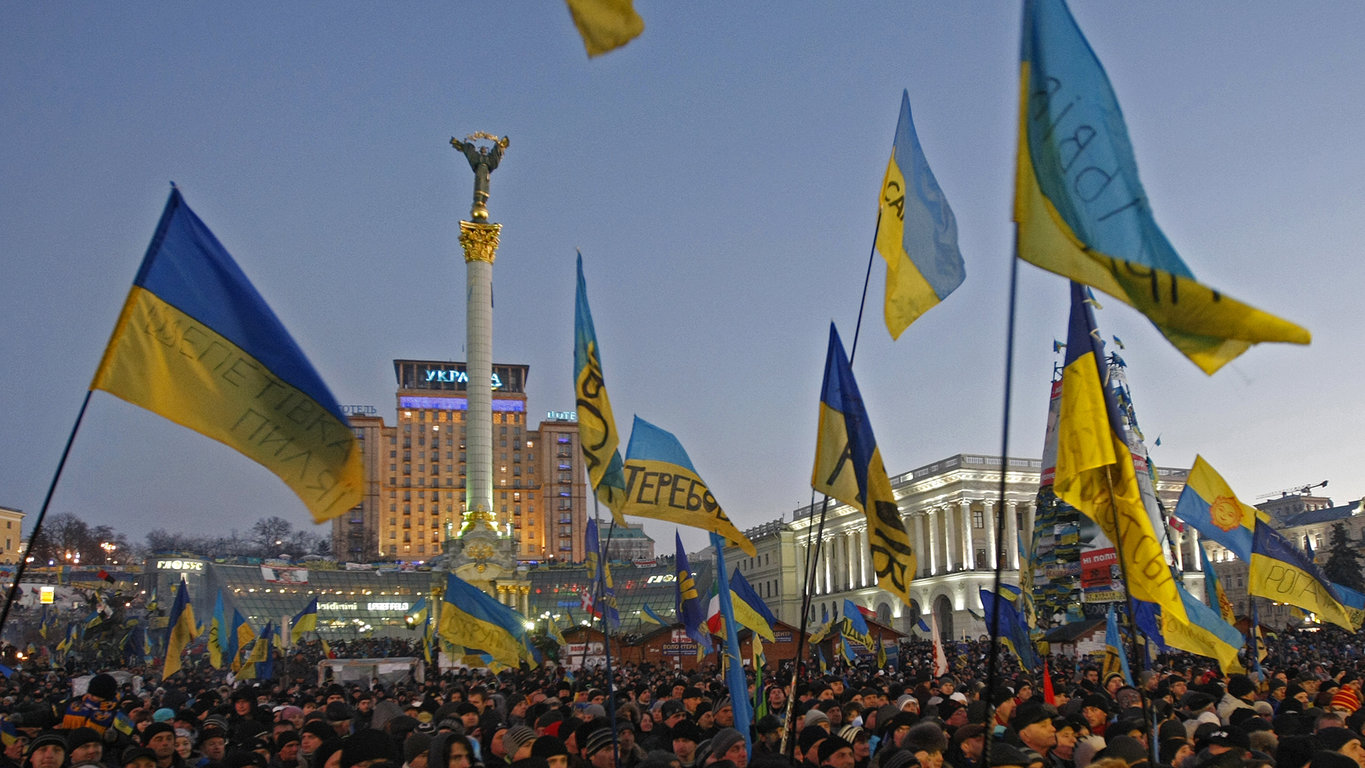
Euromaidan, Kyiv, December 14, 2013 / Photo: Mykolay Timchenko
In a book dealing with the political economy of Ukraine, it is also strange that it hardly treats the qualitative shift that has taken place between the economic development strategy of the Ukrainian bourgeois before 2014 compared to after 2014. Before, there were certain real attempts at import-substitution industrialization, and afterwards, even the attempt to engage in minimal protectionism during a global economic crisis was denied, at the request of western ‘partners’.
Instead Bojcun seems to suggest that nothing changed – the same ‘Stalinist bureaucracy’ apparently remains. Surely it would be worth mentioning how the country went from one in which import-substitution industrialization was a popular slogan among much of the elite, to one whose extreme embrace of libertarian economic ideology is described by even the diplomats of imperialist nations as ‘complicated management experiments in a “lab animal” country’.
Class analysis
The link of politics with economic classes seems quite blurred when he argues that the regional ideological divide of nationalism versus communism has been ‘resurrected’ by politicians – implying it never existed outside their constructions[29]. He also calls it ‘а division of Ukraine that has deep historical roots’, but doesn’t explain what exactly these ‘historical roots’ might be – are they cultural, economic, political, or something else[30]?
Bojcun claims that ‘The Maidan arose in 2013, as it did in 2004, because the new Ukrainian ruling class failed to share state power democratically or to invest in the development of its own society[31]’. While a deficit of ‘democracy’ may explain contradictions among the Ukrainian bourgeois which certainly played a crucial role in pushing euromaidan to success (regarding which he however says little about), he is talking here about why maidan was a revolt against ‘corruption, social injustice and oligarchic rule[32]’ – he is talking about a particular ideological self-portrayal of these events.
I think Bojcun’s treatment of euromaidan would have benefited from a closer examination of its central mobilizing theme – European economic integration, on the basis of the very concrete euro-association agreement. Limiting discussion of these events to revolt against ‘corruption, social injustice and oligarchic rule[33]’ is an abstraction away from what the protestors concretely called for – moving ahead with signature of the euro-association agreement. A book dealing with political economy should try to explain how such a slogan became appealing to millions of people, despite its concrete implementation resulting in their increased immiseration. According to official statistics, 71.5% of Ukrainians in 2013 earned $335 a month or less, while 85% in 2020 earned $320 or less. Bojcun only focuses on the nationalist element in mobilization, writing that ‘The protesters simply saw in Yanukovych’s refusal to sign the Agreements a rejection of the EU as a result of the pressure coming from Moscow[34]’.
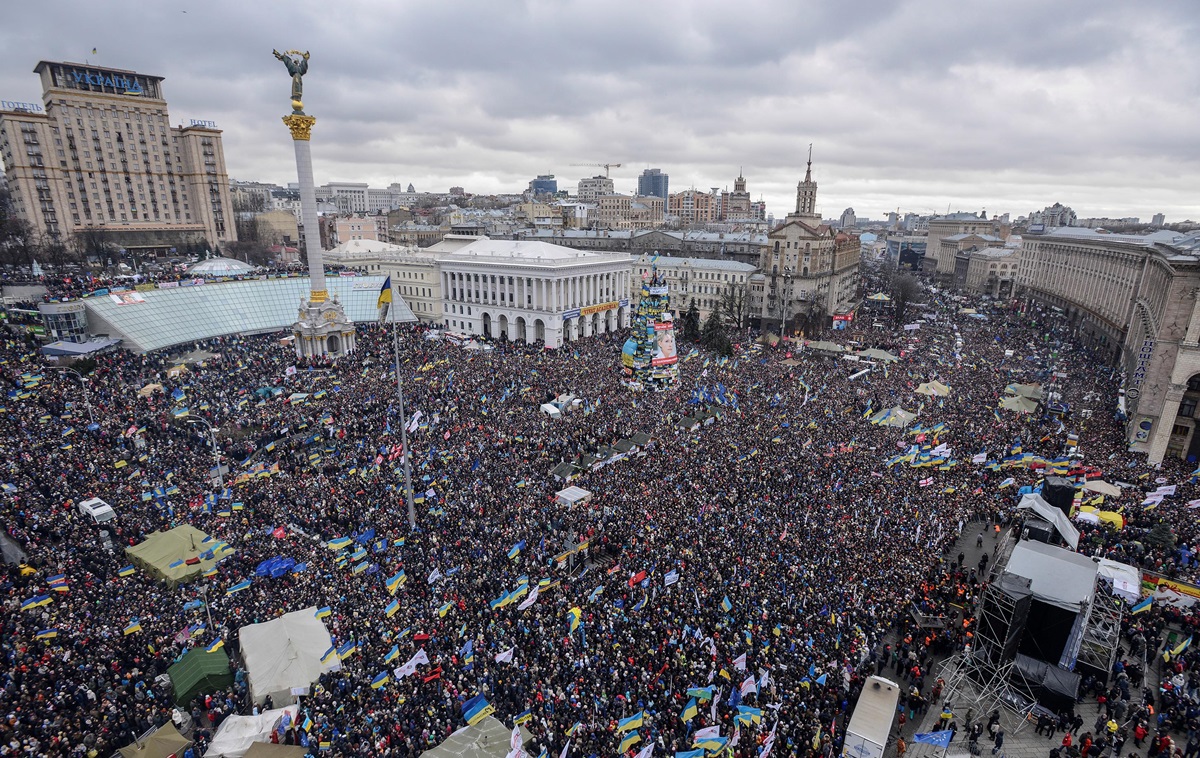
Euromaidan in Kyiv, December 8, 2013 / Photo: AP
Instead, it seems like it would be much more productive to analyze the political events of 2013-2014 in terms of economic class interests. A good example of such an approach could be Georgi Derluguian’s work on the class bases of nationalist political mobilization in the Caucasus[35]. As in the Caucasus, in Ukraine the sub-proletariat of the western and central regions – whose income depended on informal labor or migration to richer countries, which received few tangible benefits from the developmentalist state – was thereby willing to engage in violent protest against it, or support whatever possible to make it easier to work in the EU. Meanwhile, the formal industrial proletariat of the south-east regions did depend on the developmentalist state and its policies of industrial protectionism, and hence were more likely to support its conservation, and were more often against the euromaidan movement, which called for economic liberalization.
Aside from the hostility against Yanukovych by the Ukrainian oligarchy due to his attempt to centralize economic and political power, a class based analysis of these events should also account for the predominance of petit-bourgeois professionals[36] in the euromaidan movement, particularly its most politically active leadership. Why were they so attracted to the idea of ‘Europe’ and repelled by ‘corruption’? How do such aspirations fit into – or misconceive – the reality of the capitalist world-system? In my view, it is a failure of Bojcun’s text that he takes ‘anti-corruption’ at its word as some kind of universal slogan, instead of explaining the very specific meaning it has for different classes, as well as its common usage as a byword by economic liberals for the destruction of state capacity for protectionism and sovereign economic policy in poor nations.
Conclusion
To conclude, I hope that Bojcun’s book inspires more attempts to analyze the real tendencies of capitalist economic development in Ukraine. Future attempts should continue with Bojcun’s attempt to situate Ukrainian economic development in the global context, but should make sure to:
1. Identify the economic, not political limits of economic development in Ukraine, as a low-wage capitalist nation.
2. Focus on all the contradictory aspects of political developments, without forcing them into a particular narrative.
Footnotes
- ^ Marko Bojcun. 2020. Towards a Political Economy of Ukraine: Selected Essays 1990–2015 (Ukrainian Voices), Stuttgart: Ibidem-Verlag, 84 p.
- ^ Ibid, 247 p.
- ^ Ibid, 244 p.
- ^ Ibid, 142 p.
- ^ Ibid, 97 p.
- ^ For further analysis of this difference between the dynamic of a planned and market economy, see pages 129-130 in Unequal Exchange and pages 229-236 in Profit and Crises, both by Arghiri Emmanuel.
- ^ Marko Bojcun. 2020. Towards a Political Economy of Ukraine: Selected Essays 1990–2015 (Ukrainian Voices), Stuttgart: Ibidem-Verlag, 115, 112 p.
- ^ This dynamic was first described by the Soviet economist Grigory Feldman. See pages 147-152 in Socialist Planning, by Michael Ellman. See pages 229-236 in Profit and Crises, by Arghiri Emmanuel, for the analysis we most agree with, which explains why wages limit investment in a capitalist, but not a socialist economy.
- ^ Marko Bojcun. 2020. Towards a Political Economy of Ukraine: Selected Essays 1990–2015 (Ukrainian Voices), Stuttgart: Ibidem-Verlag, 95 p.
- ^ Ibid, 230 p.
- ^ Ibid, 199 p.
- ^ Ibid, 252 p.
- ^ Ibid, 245 p.
- ^ See Robert Biel’s the New Imperialism, ‘the Third World Challenge’ pages 118-130, for a theoretical argument about the contradictions of ISI development in low-wage nations, tying it to the crisis of this form of development in the 20th century. See Vivek Chibber’s Locked in Place for a comparative study of the economic development of 20th century India and South Korea, which emphasizes external economic factors (demand for exports) over political factors in explaining the rapid development of the latter and the stagnation of the former, despite both nations beginning with an ISI style of economic policy, and then moving towards a more export-led form of development. See Robert Castley’s Korea’s Economic Miracle for more on the unique factors which led to South Korea being granted access to the markets of the high-wage nations by Japan and the US.
- ^ Marko Bojcun. 2020. Towards a Political Economy of Ukraine: Selected Essays 1990–2015 (Ukrainian Voices), Stuttgart: Ibidem-Verlag, 245 p.
- ^ Ibid, 230 p.
- ^ Ibid, 252 p.
- ^ Ibid, 212-3 p.
- ^ Ibid, 201-2 p.
- ^ Ibid, 203-3 p.
- ^ Ibid, 151 p.
- ^ Ibid, 155-6 p.
- ^ Ibid, 209-10 p.
- ^ Ibid, 205 p.
- ^ Ibid, 238 p.
- ^ Ibid, 282 p.
- ^ Ibid, 245 p.
- ^ Ibid, 250 p.
- ^ Ibid, 60 p.
- ^ Ibid, 67 p.
- ^ Ibid, 250 p.
- ^ Ibid, 250 p.
- ^ Ibid, 250 p.
- ^ Marko Bojcun. 2020. Towards a Political Economy of Ukraine: Selected Essays 1990–2015 (Ukrainian Voices), Stuttgart: Ibidem-Verlag, 267 p.
- ^ Bourdieu’s Secret Admirer in the Caucasus, 150-155 pp.
- ^ 39.5% of protestors at euromaidan in Kiev in December were ‘specialists with higher education’: http://www.kiis.com.ua/?cat=reports&id=216&lang=rus



